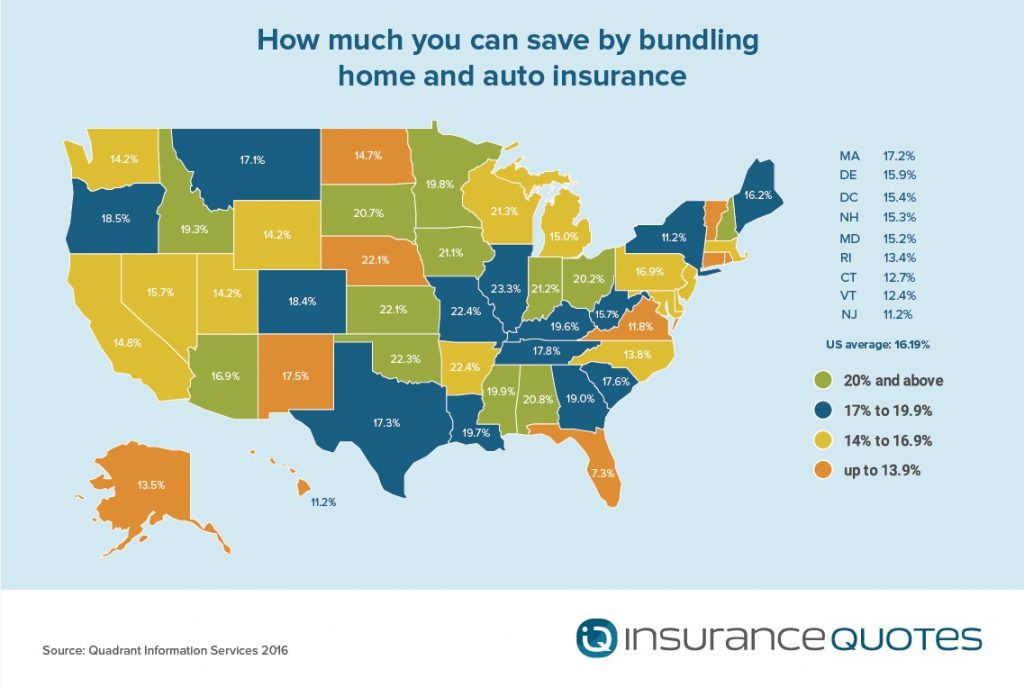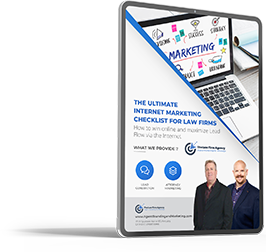Navigating the digital marketing landscape can be challenging for insurance agents. With an array of tools and techniques available—PPC, SEO, social media, and content marketing—it’s essential to develop a cohesive strategy that drives leads and enhances brand visibility. This guide will explore how to integrate these elements effectively, ensuring your marketing efforts are balanced and successful.
Key Takeaways
- Holistic Digital Marketing: A balanced online marketing strategy for insurance agents integrates Pay-Per-Click (PPC), Search Engine Optimization (SEO), Social Media Marketing (SMM), and Content Marketing to drive leads and enhance brand visibility.
- Pay-Per-Click Advertising (PPC):
- Conduct thorough keyword research and craft compelling ad copy.
- Manage budgets effectively and continuously monitor performance.
- Track key metrics like Click-Through Rate (CTR), Cost Per Click (CPC), and Conversion Rate for optimization.
- Search Engine Optimization (SEO):
- Perform keyword research to identify relevant search terms.
- Implement on-page SEO techniques like optimizing titles, meta descriptions, and headers.
- Focus on off-page SEO strategies, including building high-quality backlinks.
- Optimize technical aspects such as site speed and mobile-friendliness.
- Social Media Marketing (SMM):
- Choose platforms that align with your target audience (e.g., LinkedIn for B2B, Facebook and Instagram for B2C).
- Create engaging content that resonates with your audience, using a mix of multimedia.
- Build and nurture relationships by interacting with followers and promptly responding to comments and reviews.
- Develop targeted ad campaigns and implement retargeting strategies.
- Content Marketing:
- Identify audience needs and create relevant, valuable content.
- Distribute content through various channels like blogs, email newsletters, and social media.
- Encourage engagement and interaction through discussions, comments, and live sessions.
- Measure success using metrics such as engagement rates, shares, and lead conversions.
- Cohesive Strategy:
- Develop a unified marketing plan with clear, measurable goals.
- Ensure consistency across all marketing channels in terms of brand voice and messaging.
- Regularly analyze performance data and adjust strategies to stay ahead of trends and competitors.
- Continuous Improvement:
- Continuously monitor and adjust your marketing efforts based on data-driven insights.
- Stay updated with the latest digital marketing trends and tools to enhance your strategy.
Understanding the Elements of Digital Marketing
Pay-Per-Click Advertising (PPC)
Pay-Per-Click (PPC) advertising allows you to buy visits to your site rather than earning them organically. You pay a fee each time someone clicks on your ad. PPC is a powerful tool for generating immediate traffic and leads. Platforms such as Google Ads, Bing Ads, and social media channels offer robust PPC options tailored to different budgets and marketing goals.
Search Engine Optimization (SEO)
SEO involves optimizing your website to rank higher in search engine results pages (SERPs), thereby increasing organic traffic. Key components of SEO include on-page SEO (optimizing content and HTML source code), off-page SEO (building backlinks), and technical SEO (improving site speed, mobile-friendliness, and overall site architecture).
Social Media Marketing (SMM)
Social Media Marketing leverages social networks to promote your insurance services and engage with your audience. Platforms like Facebook, LinkedIn, Twitter, and Instagram allow you to connect with potential clients, share valuable content, and build your brand’s online presence. SMM is crucial for creating brand awareness and fostering client relationships.
Content Marketing
Content marketing focuses on creating and distributing valuable, relevant, and consistent content to attract and retain a clearly defined audience. This can include blogs, videos, infographics, and eBooks. Effective content marketing establishes you as a thought leader in the insurance industry and drives organic traffic and leads.
Integrating PPC into Your Marketing Strategy
Setting Up PPC Campaigns
To create effective PPC campaigns, start with thorough keyword research. Identify the keywords potential clients are using to search for insurance services. Use tools like Google Keyword Planner or SEMrush for this task. Once you have your keywords, craft compelling ad copy that highlights your unique selling points and includes a clear call-to-action (CTA).
Budget Management
Effective budget management is critical to PPC success. Allocate your budget based on the performance of different keywords and ad groups. Continuously monitor and adjust your spending to maximize ROI. Tools like Google Ads’ Budget Report can help you track and optimize your budget allocation.
Measuring Success
Track key metrics such as Click-Through Rate (CTR), Cost Per Click (CPC), and Conversion Rate to measure the success of your PPC campaigns. Utilize analytics tools like Google Analytics to gain insights into your campaign performance and make data-driven decisions for optimization.
Enhancing Visibility with SEO
Keyword Research and Analysis
Effective SEO starts with keyword research. Identify keywords that potential clients use when searching for insurance services. Use tools like Ahrefs or Moz to find relevant keywords and assess their search volume and competition.
On-Page SEO Techniques
Optimize your website’s content by including target keywords in titles, meta descriptions, headers, and throughout the body text. Ensure your site is mobile-friendly, as a significant portion of web traffic comes from mobile devices. Utilize schema markup to help search engines understand your content better and improve your chances of getting featured in rich snippets.
Off-Page SEO Strategies
Building high-quality backlinks from reputable websites is crucial for off-page SEO. Engage in guest blogging, influencer partnerships, and content syndication to acquire these links. Additionally, maintain a strong online reputation through positive reviews and social signals.
Technical SEO
Technical SEO involves optimizing your website’s backend to ensure search engines can crawl and index your site efficiently. Improve site speed by compressing images, enabling browser caching, and minimizing CSS and JavaScript. Ensure your site has an XML sitemap and a properly configured robots.txt file to guide search engines.
Leveraging Social Media for Engagement and Lead Generation
Choosing the Right Platforms
Select social media platforms that align with your target audience. For instance, LinkedIn is ideal for B2B marketing, while Facebook and Instagram are more suited for B2C interactions. Analyze the demographics and behaviors of your audience on each platform to tailor your strategy accordingly.
Creating Engaging Content
Develop content that resonates with your audience. This includes posts, stories, and ads that provide value and encourage interaction. Use a mix of multimedia content such as images, videos, and infographics to capture attention and drive engagement.
Building and Nurturing Relationships
Engage with your followers by responding to comments, messages, and reviews promptly. Host Q&A sessions, live videos, and webinars to interact with your audience in real-time. Building a community around your brand fosters loyalty and trust.
Advertising on Social Media
Craft targeted social media ad campaigns to reach specific segments of your audience. Utilize Facebook Ads Manager or LinkedIn Campaign Manager to create ads based on demographics, interests, and behaviors. Implement retargeting strategies to re-engage users who have interacted with your brand but haven’t converted.
Crafting a Compelling Content Marketing Strategy
Content Creation
Identify the needs and interests of your target audience to create relevant content. Develop a content calendar to plan and organize your content production and distribution. Ensure your content is informative, engaging, and aligns with your audience’s pain points and interests.
Distribution Channels
Distribute your content across various channels to maximize reach. This includes your website’s blog, email newsletters, and social media platforms. Leverage video platforms like YouTube to share video content and increase visibility.
Engagement and Interaction
Encourage audience interaction by asking questions, prompting discussions, and inviting comments and shares. Host webinars and live sessions to provide value and interact with your audience directly. Engagement helps build a loyal community and increases the chances of content virality.
Measuring Content Success
Track key metrics such as engagement rates, shares, and lead conversions to measure the success of your content marketing efforts. Use tools like Google Analytics and social media analytics platforms to analyze content performance and adjust your strategy accordingly.
Combining Elements into a Cohesive Strategy
Creating a Unified Marketing Plan
Develop a unified marketing plan that sets clear, measurable goals. Ensure your PPC, SEO, SMM, and content marketing efforts are aligned and support each other. For instance, use keyword research to inform both your PPC and SEO strategies.
Maintaining Consistency Across Channels
Maintain a consistent brand voice and message across all marketing channels. Coordinate campaigns to ensure they complement each other and provide a seamless experience for your audience. Consistency helps in building brand recognition and trust.
Regular Analysis and Adjustment
Continuously monitor the performance of your marketing efforts and make data-driven adjustments. Use analytics tools to track key metrics and identify areas for improvement. Regularly update your strategies to stay ahead of market trends and competitor activities.
Conclusion
A balanced online marketing strategy is crucial for insurance agents aiming to enhance their brand visibility and drive leads. By effectively integrating PPC, SEO, social media marketing, and content marketing, you can create a cohesive strategy that delivers results. Start implementing these strategies today to stay ahead in the competitive insurance market.
FAQs
Why is a balanced online marketing strategy important for insurance agents?
A balanced online marketing strategy ensures that insurance agents can effectively reach and engage their target audience across multiple digital channels. By integrating PPC, SEO, social media marketing, and content marketing, agents can drive leads, enhance brand visibility, and build a strong online presence.
What is Pay-Per-Click (PPC) advertising and how can it benefit my insurance business?
PPC advertising is a model where you pay a fee each time someone clicks on your ad. It benefits your insurance business by generating immediate traffic to your website, allowing you to quickly reach potential clients who are actively searching for insurance services.
How can I effectively manage my PPC budget?
Effective budget management involves allocating your budget based on the performance of different keywords and ad groups. Continuously monitor and adjust your spending to maximize ROI. Use tools like Google Ads’ Budget Report to track and optimize your budget allocation.
What are the key components of SEO that I should focus on?
The key components of SEO include:
- On-page SEO: Optimizing content and HTML source code.
- Off-page SEO: Building high-quality backlinks.
- Technical SEO: Improving site speed, mobile-friendliness, and overall site architecture.
How do I choose the right social media platforms for my marketing strategy?
Select social media platforms that align with your target audience. For example, LinkedIn is ideal for B2B marketing, while Facebook and Instagram are more suited for B2C interactions. Analyze the demographics and behaviors of your audience on each platform to tailor your strategy accordingly.
What types of content should I create for my content marketing strategy?
Create a variety of content types including blogs, videos, infographics, and eBooks. Ensure the content is relevant, valuable, and addresses the needs and interests of your target audience. Developing a content calendar can help plan and organize your content production and distribution
How can I measure the success of my digital marketing efforts?
Track key metrics specific to each marketing element. For PPC, measure Click-Through Rate (CTR), Cost Per Click (CPC), and Conversion Rate. For SEO, monitor search engine rankings and organic traffic. For social media, track engagement rates, shares, and follower growth. Use tools like Google Analytics and social media analytics platforms to analyze performance.
How do I ensure consistency across all my marketing channels?
Maintain a consistent brand voice and message across all marketing channels. Coordinate campaigns to ensure they complement each other and provide a seamless experience for your audience. Consistency helps in building brand recognition and trust.
What are some strategies for building and nurturing relationships on social media?
Engage with your followers by responding to comments, messages, and reviews promptly. Host Q&A sessions, live videos, and webinars to interact with your audience in real-time. Building a community around your brand fosters loyalty and trust.
How often should I review and adjust my marketing strategy?
Continuously monitor the performance of your marketing efforts and make data-driven adjustments. Regularly update your strategies to stay ahead of market trends and competitor activities. Conduct a thorough review at least quarterly to ensure your strategy remains effective and aligned with your goals.
These FAQs provide a quick reference for insurance agents looking to implement a balanced and effective online marketing strategy.
This article is a collaboration between Carl Willis and OpenAI’s ChatGPT. Created on June 28, 2024, it combines AI-generated draft material with Willis’s expert revision and oversight, ensuring accuracy and relevance while addressing any AI limitations.






